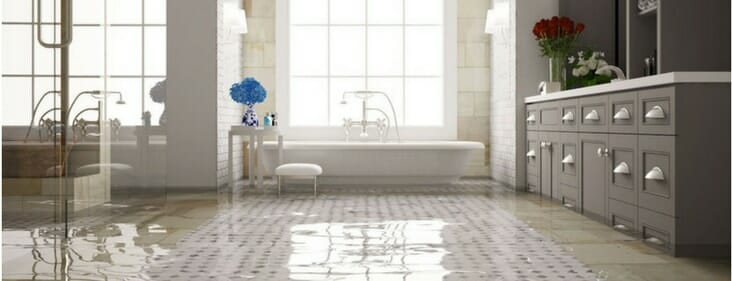Are you interested in resources concerning How to Fix a Water Damage Bathroom?

The restroom is very vulnerable for damp buildup and prospective water damages due to the regular use water in it. This short article uses simple evaluation methods to aid spotting water damages threats.
The frequent use water in the washroom makes it incredibly vulnerable for moist build-up as well as possible water damages. By inspecting it regularly, you can reduce water related damages.
The following set of evaluations is easy to carry out and ought to be done once in every three months in order to keep your shower room healthy and to prevent potential water problems brought on by the bathtub, the shower, pipe joints and plumbing, sinks, cabinets, and the toilet
Do not overlook carrying out these evaluations as well as be extensive while doing them. Bear in mind that these basic assessments can save you a lot of money by offering early indications for water damage
Bathtub and Shower
The shower and also bath tub call for unique interest as well as maintenance. Inspect the tiles and replace if fractured. See to it that there is no missing out on cement between the tiles. Inspect and change split caulking at joints where the wall surfaces satisfy the floor or the bathtub. Obstructed drains pipes as well as pipes problems will certainly protect against the tub from drying and might show severe problems beneath the bath tub. Talk to an expert instantly to prevent architectural damages. Take note of discolorations or soft locations around the tub walls as they might suggest an internal leakage.
Plumbing
Signs for water damages are hard to detect given that a lot of pipes are mounted inside the wall surfaces.
Pay unique interest to flooring as well as walls wetness and spots as they may suggest an invisible plumbing issue. Examine wetness degrees in adjoining rooms also.
Sinks and also Cabinets
Sinks and cupboards are exposed to dampness and moisture everyday and also are commonly overlooked. Evaluate frequently under the sink and also on the counter top over it. Repair any drip in the trap as it might suggest drainpipe issues. Check out the sink, slow draining pipelines may show a blocked drainpipe. Change sink seals if they are broken or loosened.
The Toilet
The commode is a susceptible water joint. Check the water lines as well as look for leakages around the commode seat, in the hose pipe, and also under the water storage tank. If you identify any indications of dampness on the floor around the bathroom, look for leaks in the toilet edge and storage tank seals.
Realize that hanging toilet dish antiperspirants enhances the possibilities for obstructions.
Water Damage Signs In The Bathroom To Avoid Cleanup
Musty smell
This is one of the easiest signs to catch because musty smells are so odorous. The damp, earthy, moldy smell should be a big red flag. The smell will develop when moisture gets trapped in surfaces, and begins to facilitate mold growth. Leaking pipes under cabinets, inside walls, and behind shower fixtures will cause moisture to stay trapped and not dry, which will lead to mold growth and spread. As soon as you notice any musty smells in your bathroom, have it checked for hidden water damage and cleanup signs.
Visible mold
If the smell isn’t there to give it away, sometimes you will actually see mold growth. Finding mold in your bathroom is a serious problem, because mold is very harmful to your health. By the time mold growth is visible, it also means that water damage has already occurred and been present for some time. The only way the mold problem can be resolved is to find the source of the moisture and get it stopped. To safely and adequately remove mold, you need to have professionals handle the remediation. Do not waste any time in getting mold problems addressed, fixed, and sanitized so that you can protect you and your family from the many respiratory symptoms caused by mold exposure.
Damaged floors
Bathroom floors should be able to withstand some exposure to water while still remaining in good condition. However, when excess exposure or water leaks occur, they will begin to damage even the most water-resistant flooring. If you notice any cracking, bubbling, staining, or warping on your bathroom floors, there is probably a water leak somewhere causing the distortion. If you notice areas of the floor have become softer, or even have a spongy feeling, there is probably damage to the subfloor. Subflooring is typically made up of plywood. When plywood is exposed to water or moisture, it will absorb it. Once it has become saturated, the weight of the excess water will cause the wood to swell and soften. Check the floors in your bathroom frequently to catch any of these sings before they lead to damaged subflooring.
Changes on walls
When water leaks behind walls, it will cause changes in the drywall. Peeling plaster, blistering paint, and soggy wallpaper are all good indicators that excess water is building up behind the wall. Water leaking behind drywall will cause it to swell and be soft to the tough. If you start to notice gaps along the trim of your walls, or where tile meets the wall, it could also be a strong indicator that there is a leak behind the wall. Any changes, distortion, or damage on the walls should be evaluated as soon as you notice it to prevent further water damage and cleanup.

I am very inquisitive about How to Repair and Prevent Bathroom Water Damage and I'm hoping you liked the article. Loved our article? Please share it. Let somebody else locate it. I appreciate reading our article about How to Fix a Water Damage Bathroom.
Learn More
Comments on “Searching for Signs of Water Damage in the Bathroom”